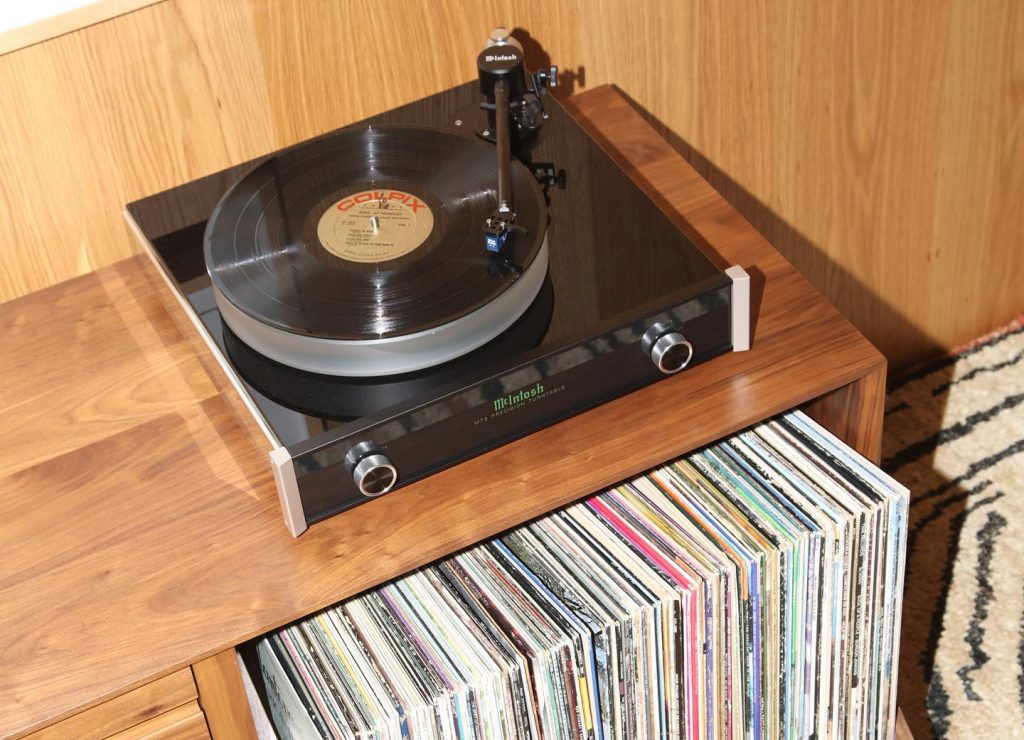Interview: Igor Gligorov of Soulines Turntables
This Serbian designer’s turntables blend music, science and design

by Emily Millett
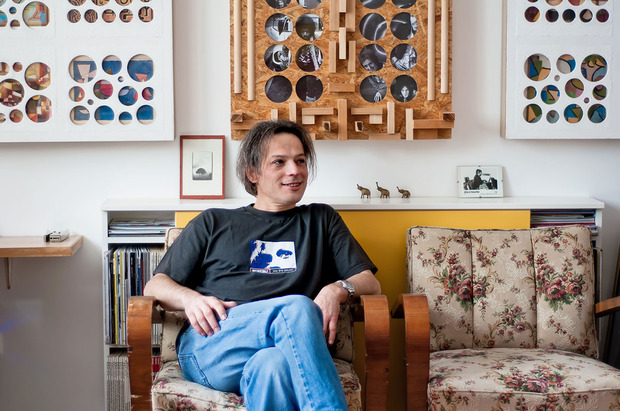
Describing himself as an “old school perfectionist” with a “mind full of music,” Igor Gligorov is all about the art of good vibrations—vibration control to be precise. And, since that is the basis of efficient and advanced turntable design, it’s pretty important in his line of work. Four years ago—after having spent half a lifetime immersed in all things music—Gligorov decided to turn his passion into his business, resulting in the launch of Soulines Turntables. The aim of the company was to “combine musicality and beauty in an electro-mechanical object that plays vinyl records with exceptional sound quality, and ease of use and set up.”
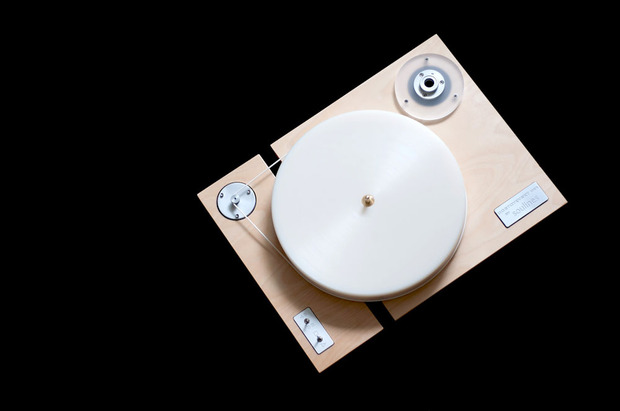
A number of awards later, Gligorov and his art-inspired turntables are in the process of plumping out their portfolio. With growth in the pipeline, the boutique business is still determined to stick to its non-consumerist approach and, quite literally, to do it for the love of the music. On the eve of this expansion, we spoke with Gligorov about refining life philosophies, artistic inspiration and how turntables can sometimes resemble spaceships.
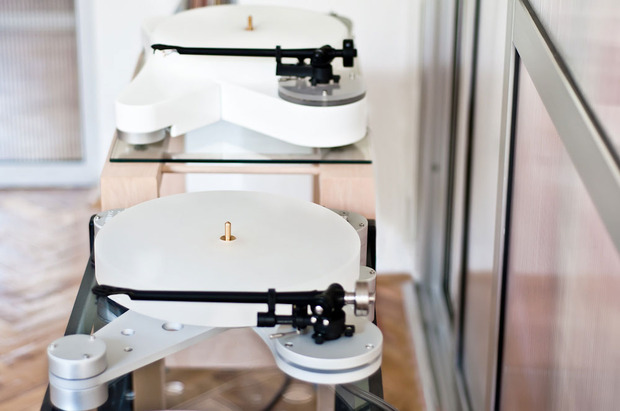
Your company Soulines designs and handcrafts bespoke turntables. How does each design differ from the others?
Currently I have three different designs in production and three new designs are being cooked in my head. The main differences between the models are in the materials employed, the plinth shape, the vibration control and the damping strategies.
So music plays a big role in your life. How has your musical background helped you on your path?
I attended music school in Belgrade from the age of five, and graduated as a trained cello player at 13. In my teenage years I discovered blues, rock, punk and new wave—I formed numerous bands with schoolmates and taught myself to play guitar and bass guitar. At this time I also learned how to record, mix and produce music. Later, when I was living in Moscow, I owned a small recording studio, providing recording and mixing services for local bands. Being a sound perfectionist, I’ve also mastered the art of sound restoration and can now repair old recordings. Knowing the complete process of composing, playing, performing, recording, mixing and producing music has helped me enormously in evaluating the sound quality of my turntables. Like musical instruments, turntable design is based on advanced vibration control, so being familiar with lots of different instruments—both acoustic and electric—helps me to make the right decisions about material use, shape, dimensions and proportions of different turntable parts.
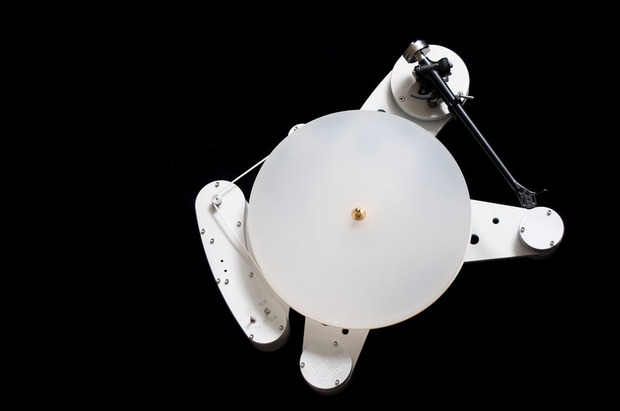
When and where did you develop the creative streak so evident in the highly aesthetic style of the finished turntables?
Turntable design and manufacturing combines two of my favorite disciplines: music and science. I graduated as a Bachelor of Science in mechanical engineering from the department of Naval Architecture, which is probably the most creative (art-wise) department of mechanical engineering. Both of my parents were intellectuals, but not members of the Communist party—which was very rare in the Yugoslavia of the ’70s—so I was raised in an atmosphere where a love of music, art, science, creativity and work (hard work) were praised over material things. My father was always trying to teach me and my younger brothers how to create useful things like furniture and other household stuff, so growing up I was exposed to a real do-it-yourself approach to music and creation. For the last 30 years I have been refining this path.
With turntables named Kubrik, Hermes and Dostoyevsky, your influences are obvious. But how did the designs come to be assigned these unique titles?
I am a dedicated art aficionado and many times I get inspiration from film, photography, literature and fine arts. The Kubrick DCX turntable is inspired by Stanley Kubrick’s classic 2001: A Space Odyssey. It was designed as a smooth, musical, space object; a bit like Space Station One, which is described as “polished metal surfaces of the slowly revolving, three hundred-yard-diameter disk. The central axis of the Space Station, with its docking arms extended, was now slowly swimming toward them.”
The Hermes DCX turntable is named after the great messenger of the gods and guide to the underworld, as a reference to its ability to transmit even the finest details of any recording. The most classic turntable in the portfolio is the Dostoyevsky DCX which—with its square wooden box style, platter and tone-arm on the top—was designed to look classic, while at the same time incorporating the sound engineering necessary for it to be a great sounding turntable.

Which is your personal favorite and why?
My favorite turntable made by another brand is the Technics 1210, because I adore its classical ’70s utility DJ look and style, and its initial very good sound performance which could be easy upgraded to become exceptional. Which of my own turntables is my favorite? The Kubrick DCX, because it combines excellent performance and exceptional appearance in a compact package.
You describe new ideas as designs “cooking” in your head. Can you walk us through the design and production process of the turntables?
Usually the idea cooks in my head for some time—sometimes it’s a day, and sometimes it’s a few months. Inspiration is rather a weird beast. After the idea becomes clear or complete enough, I start with paper, pencil, ruler and calculator. I’m a mechanical engineer, so I am a bit “old school,” still using paper and a pencil. The second stage is to transfer everything from paper to a computer. I work in SolidWorks and CAD software, optimizing and finalizing the original design. After the design is finished I order the parts, assemble and test the final product.
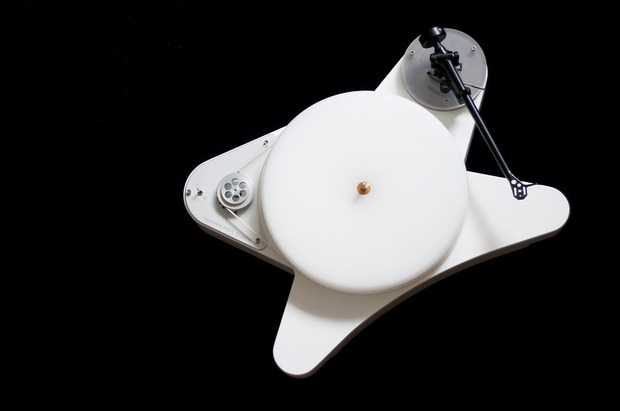
Who are your main clients and what do you think draws these people to your bespoke turntables?
Creating my turntables, I rarely think about marketing or target markets. I should probably hire some good marketing manager who will take care of that, but then it would be pure consumerism—which I deeply dislike. My turntables represent my life philosophy which I consider to be positive, open and optimistic. I presume that my clients are probably like-minded people, with a similar life philosophy to mine.
What are your plans to expand and grow the company?
I will continue to design new exciting products while retaining the high levels of quality, and continue fighting consumerism on all levels. For now we are selling turntables in Russia and negotiating distribution in Greece, Italy and Hungary. So slowly we are spreading. We offer direct sales service throughout our website for the buyers from the countries such as the US where we don’t have an appointed distributor. As well as the three new design ideas, I am also currently designing a turntable tone-arm, an RIAA phono preamplifier and some turntable accessories.
Visit Soulines Turntables online for a list of direct sales and distributors.
Images courtesy of Andjela Grozdanic


